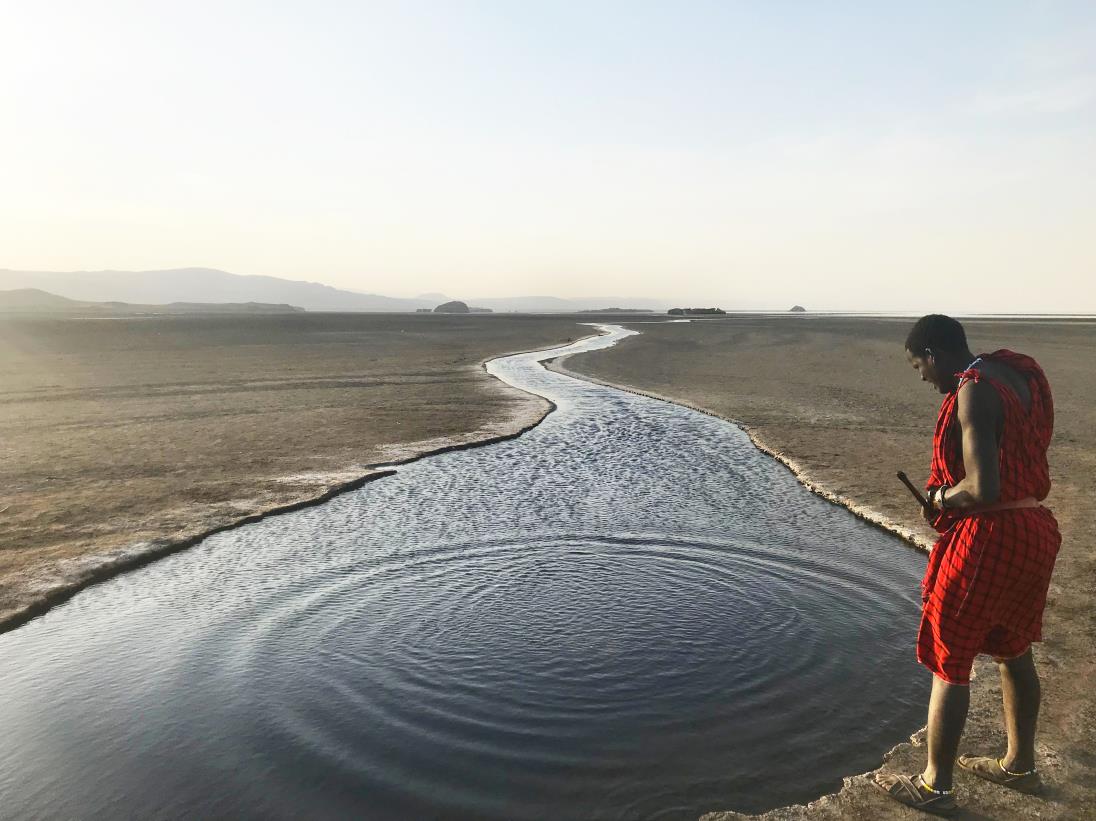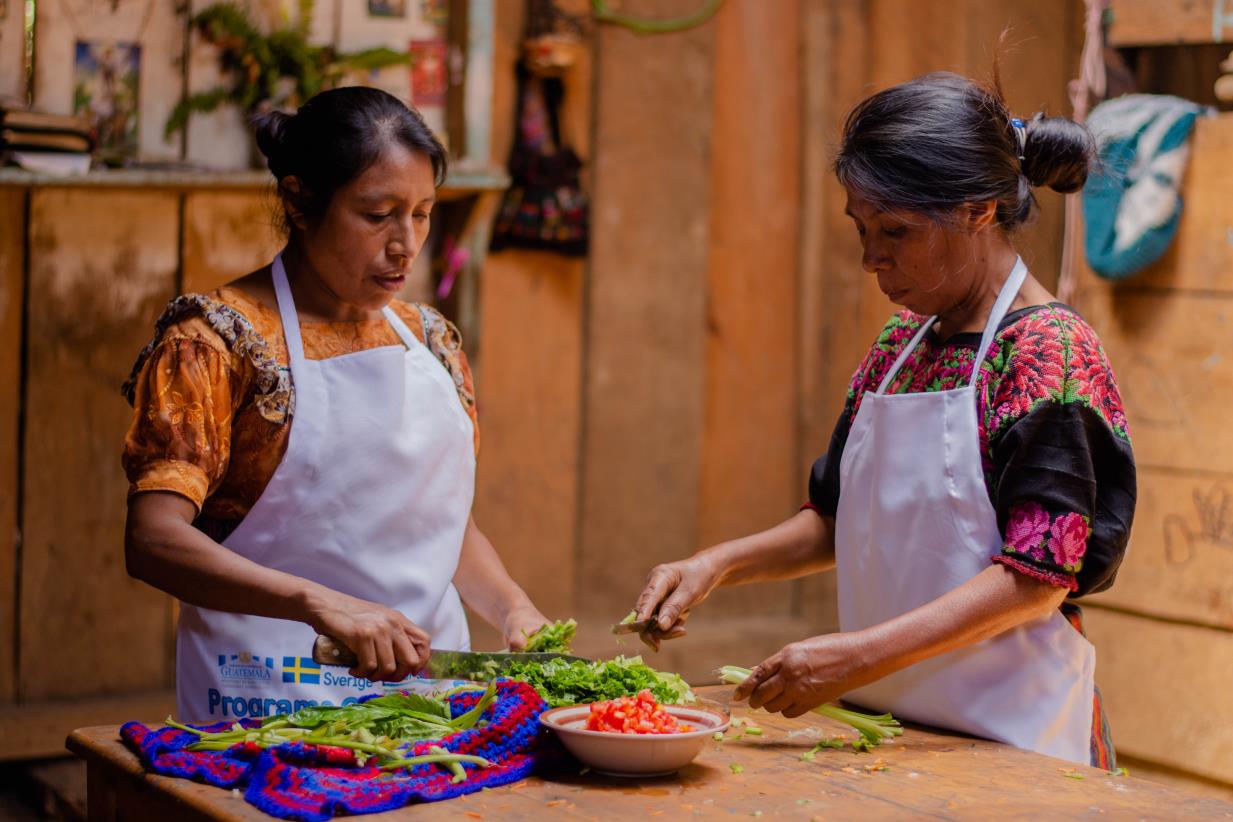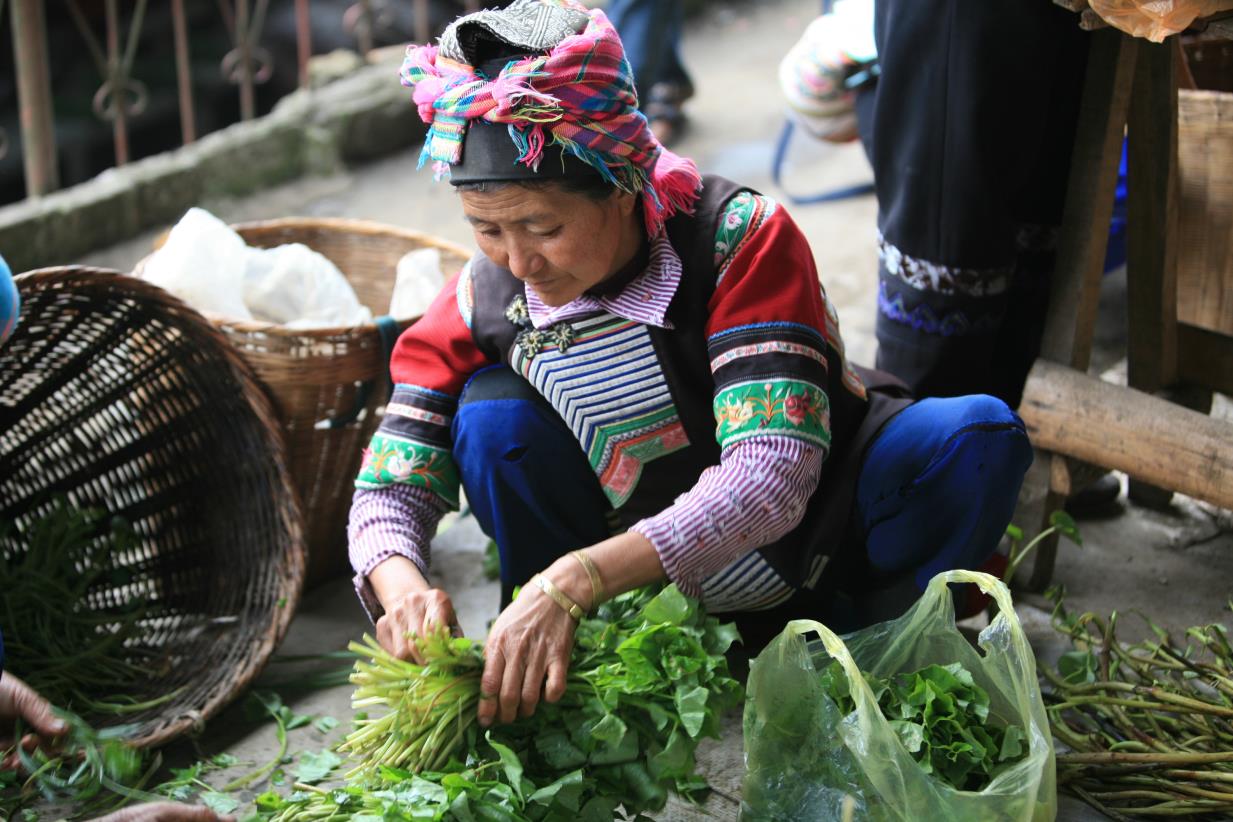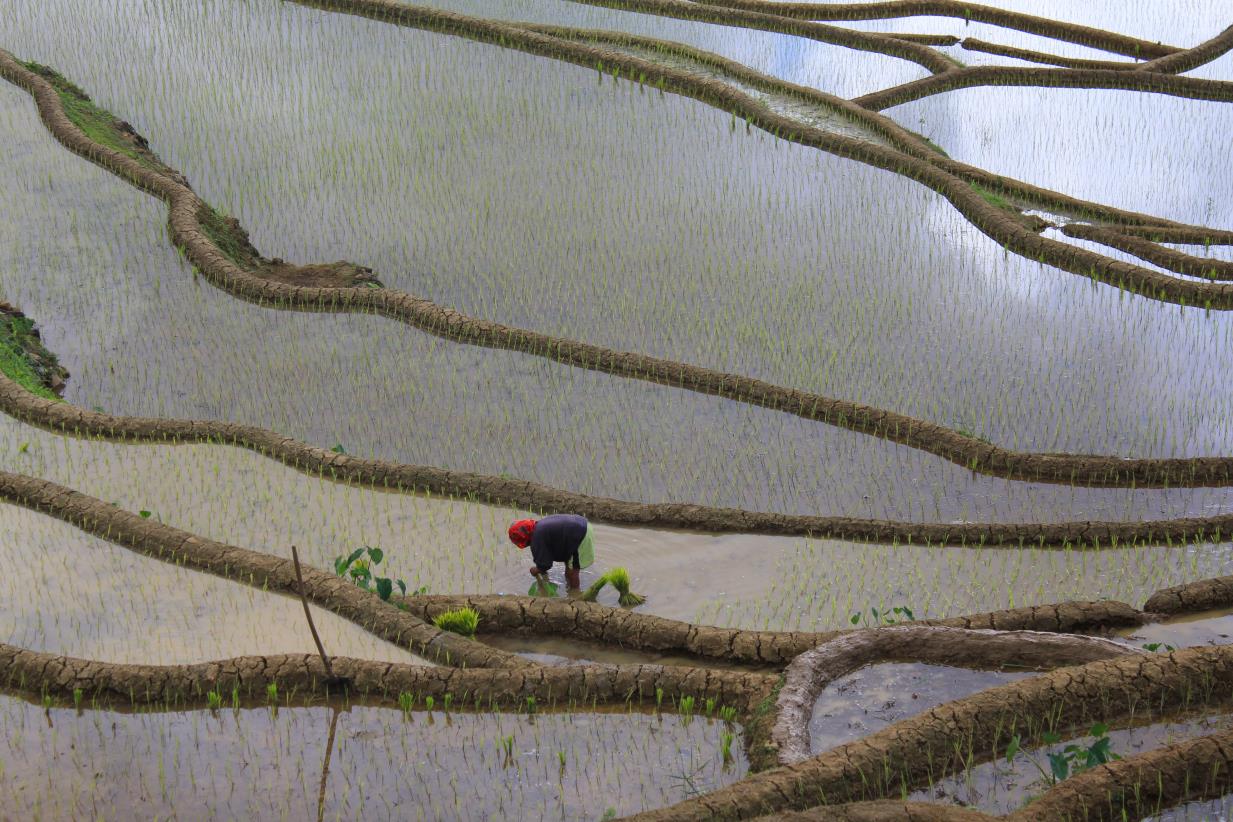
5 ways Indigenous Peoples can help the world eliminate hunger
Indigenous Peoples and their food systems can provide answers to food insecurity and climate change
Indigenous Peoples are stewards of natural resources, biodiversity and nutritious native foods. They are key partners in finding solutions to climate change and reshaping our food systems. @FAO/Francesco Farnè
09/08/2021
Constituting only 6 percent of the world population, Indigenous Peoples are nevertheless vital stewards of the environment. 28 percent of the world’s land surface, including some of the most ecologically intact and biodiverse forest areas, are primarily managed by Indigenous Peoples, families, smallholders and local communities. These forests are crucial for curbing gas emissions and maintaining biodiversity. Indigenous foods are also particularly nutritious, and their associated food systems are remarkably climate-resilient and well-adapted to the environment.
Indigenous Peoples’ ways of life and their livelihoods can teach us a lot about preserving natural resources, sourcing and growing food in sustainable ways and living in harmony with nature. Mobilizing the expertise that originates from this heritage and these historical legacies is important for addressing the challenges facing food and agriculture today and in the future.
Here are 5 of the many ways in which Indigenous Peoples are helping the world combat climate change:
1. Their traditional agricultural practices are better adapted to a changing climate
Throughout the centuries, Indigenous Peoples have developed agricultural techniques that are adapted to extreme environments, like the high altitudes of the Andes or the dry grasslands of Kenya. Their time-tested techniques, such as terracing to prevent soil erosion or floating gardens to make use of flooded fields, are well suited for the increasingly extreme weather events and temperature changes brought on by climate change.
2. They conserve and restore forests and natural resources
Indigenous Peoples see themselves as connected to nature and as part of the same system as the environment in which they live.
They have adapted their lifestyles to fit into and respect their environments. In mountains, Indigenous Peoples’ landscape management systems preserve soil, reduce erosion, conserve water and decrease the risk of disasters. In rangelands, indigenous pastoralist communities manage cattle grazing and cropping in sustainable ways that preserve rangeland biodiversity. In the Amazon, ecosystems’ biodiversity improve when Indigenous Peoples inhabit them.


Left: A programme in Guatemala is helping revive cooking traditions that feature nutritious, traditional crops as a means of fighting malnutrition in the country. ©FAO/Luis Gustavo Sánchez Días; Right: The Hani People in the Yunnan Province of China utili
3. Their foods and traditions can help expand and diversify diets
The world currently relies very heavily on a small set of staple crops. Just five crops – rice, wheat, maize, millet and sorghum – provide about 50 percent of our dietary energy needs. Replete with nutritious, native crops like quinoa and oca, the food systems of indigenous peoples can help the rest of humanity expand its narrow food base to incorporate herbs, shrubs, grains, fruits, animals and fish that might not be well known or used in other parts of the world.
4. They cultivate indigenous crops that are more resilient to climate change
Because many Indigenous Peoples live in extreme environments, they have chosen crops that have also adapted to such conditions. Indigenous Peoples often grow an array of native species of crops and a multitude of varieties that are better adapted to local contexts and are often more resistant to drought, altitude, flooding or other extreme conditions. Used more widely in farming, these crops could help build the resilience of farms now facing a changing, more extreme climate.

Throughout the centuries, Indigenous Peoples have developed agricultural techniques that are adapted to extreme environments. Their time-tested techniques, such as terracing, are well suited for the increasingly intense weather events and temperature changes brought on by climate change. ©FAO/ Lena Gubler
5. They oversee a large part of the world’s biodiversity
Traditional indigenous territories encompass 28 percent of the world’s land surface, but host 80 percent of the planet’s biodiversity. Preserving biodiversity is essential for food security and nutrition. The genetic pool for plants and animal species is found in all terrestrial biomes, as well as rivers, lakes and marine areas. Living naturally sustainable lives, indigenous peoples preserve these spaces, helping to uphold the biodiversity of the plants and animals in nature.
FAO considers Indigenous Peoples as invaluable partners in providing solutions to climate change and creating a world without hunger. We will never achieve long-term solutions to climate change and food security and nutrition without seeking help from and protecting the rights of Indigenous Peoples.
Related links
Learn more
- Website: FAO & Indigenous peoples
- Story: Once neglected, these traditional crops are our new rising stars
- Story: Feeding future generations using recipes from the past
- Podcast: TZH 23 - Shining a light on Indigenous rights
*This story is an update of one first published on 7/08/2019.

